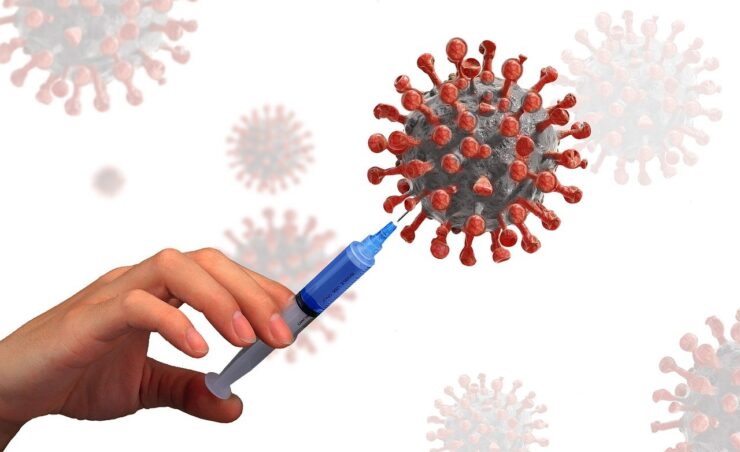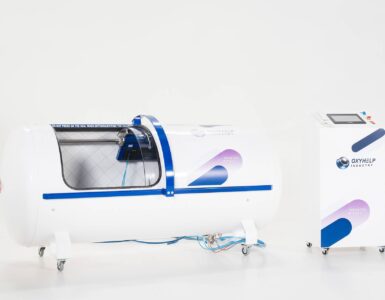Vaccines are delicate and temperature-sensitive medical items. They can retain their potency only if the storage and handling methods are correct.
Improper storage and handling can lead to damages to your vaccine stock, and if that happens, you will incur monetary losses in replacing the stock.
Why is Temperature Important?
Vaccines are delicate biological substances and temperature-sensitive, so you must store them at the correct temperature range. They need to be kept at the prescribed temperature range right from the production facilities to the healthcare centers.
For many vaccines, the storage temperature range has to be within 2 to 8 degrees range. Any exposure to outside the range and also to light will damage the vaccines. Once a vaccine gets damaged, you cannot use it.
Proper storing and handling of vaccines are necessary to administer effective vaccines to people. Vaccines help people to prevent many types of diseases.
Damaged vaccines will put people at risk, and they will require revaccination. Moreover, they will also lose trust in your healthcare facility.
The Centers for Disease Control and Prevention(CDC) conducted a study showing that several healthcare providers do not store vaccines at the right temperature range. And that prompted the CDC to make a slew of recommendations for storing and handling vaccines.
Proper Vaccine Storage
Technology is the answer to proper vaccine storage. It plays a key role in maintaining the correct temperature. For example, thermometers now function as a critical healthcare device, shifting from the usage as a simple digital home device to measure the body temperature.
Likewise, software nowadays plays a decisive role in enhancing and optimizing processes and improving care.
Earlier, vaccine temperature monitoring involved using a thermometer to record the maximum and minimum temperature of the cold storage unit. The temperatures were written in a logbook for the authorities to check.
But, things have changed today. Healthcare facilities nowadays use a vaccine storage refrigerator to store vaccines at the correct temperature. Such refrigerators provide a controlled temperature environment to store vaccines effectively.
The following are the best practices of vaccine storage:
- Place bottles of water on the door of the refrigerator to provide temperature stability
- Place bins carefully in the refrigerator. Ensure that you do not place bins too close to refrigerator walls as that could affect temperature stability
- Allow time for the refrigerator to attain the prescribed vaccine temperature
- Deploy a person who knows how to handle the refrigerator to oversee vaccine storage
- Ensure your staff checks the temperature of the refrigerator twice daily and record the maximum and minimum temperatures in a logbook
Moreover, digital data loggers (DDL) usage ensures that vaccines remain at the prescribed temperature.
DDLs have an internal memory that records the temperature inside the cold storage continuously. Moreover, they send out alert signals if the temperature goes out of the prescribed range.
You can also download the temperature data for analyzing the temperature trend.
Ensure to keep your staff near the cold storage unit as he should hear the alarm sound if DDL sends it out. If the staff member does not stay nearby, he will not hear the alarm.
If he hears an alarm signal, he should take corrective action.
Properly Handling Vaccines
Another problem to avert is the mishandling of vaccines when shippers transport vaccines from the production facility to the healthcare center.
During the transit, there could be mishandling that can create the possibility of temperatures getting out of the prescribed range. And that can damage the vaccine stock.
A major concern of vaccine mishandling is accidentally exposing the vaccine stock to the wrong temperature range.
To avert the effect of mishandling of vaccines, the CDC has recommended the proper handling practices.
The following are the best practices for handling vaccines:
- Place an order for one month of vaccines at a time
- Use a hard-walled cold storage unit to ensure that the vaccines remain stable and within the prescribed temperature during the transit
- Place an ice blanket at the bottom of the cold storage unit and cover it with a layer of bubble wrap to function as a barrier between the ice and the probe
- Allow sufficient time for the cold storage unit to reach the prescribed temperature range
- Place vaccines inside the cold storage unit only after attaining the necessary temperature
- Do not open boxes or bags that contain vaccines
When you receive new vaccine consignments at your medical facility, unpack and place the vaccines in the refrigeration unit immediately.
Leave 2-3 inches of space between the vaccines and refrigeration unit walls. It will allow proper airflow inside the unit.
Practice the first-in-first-out(FIFO) method. Place vaccines with the latest expiry dates in the front.
Keep vaccines in their original boxes and close the lids to prevent exposure to light.
Put labels on vaccines for easy identification, and that will also prevent the staff member from keeping the door open for long.
If the internal temperature goes out of the prescribed range, take corrective action immediately. Get in touch with the state or local health department directly and ask them to do the needful. You can also call the manufacturer, giving them the relevant details of the refrigerator being out of range.
A competent staff is essential to ensure proper vaccine storage. So, do not fall behind in imparting formal training to your staff on handling vaccines properly.
Staff training is another critical factor in effective vaccine handling. Only a properly trained staff can handle vaccines effectively.
Deploy a dedicated vaccine coordinator to check your freezer temperature regularly. If he finds any temperature fluctuations, he should take corrective action.
He should also check the temperature twice a day, record the temperatures on a log, and check if there are any malfunctions with the refrigerator. If he detects any malfunctions or defects, he should call up a technician to fix those.
The coordinator should rotate the vaccine stock to allow vaccines closest to their expiration date to be used first.
Besides, he should take out the expired vaccines to prevent using them on people.
Conclusion
Proper vaccine storage and handling are necessary to ensure they remain potent and effective. The methods described in this article will help you to store and handle vaccines properly.




























